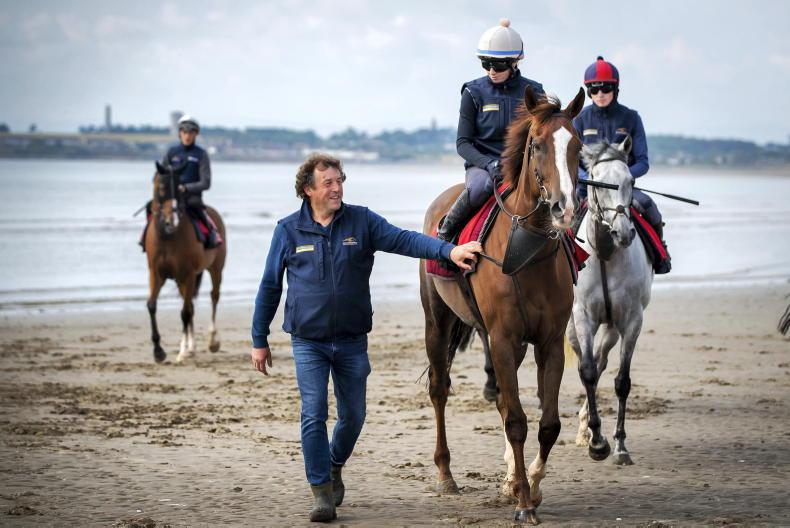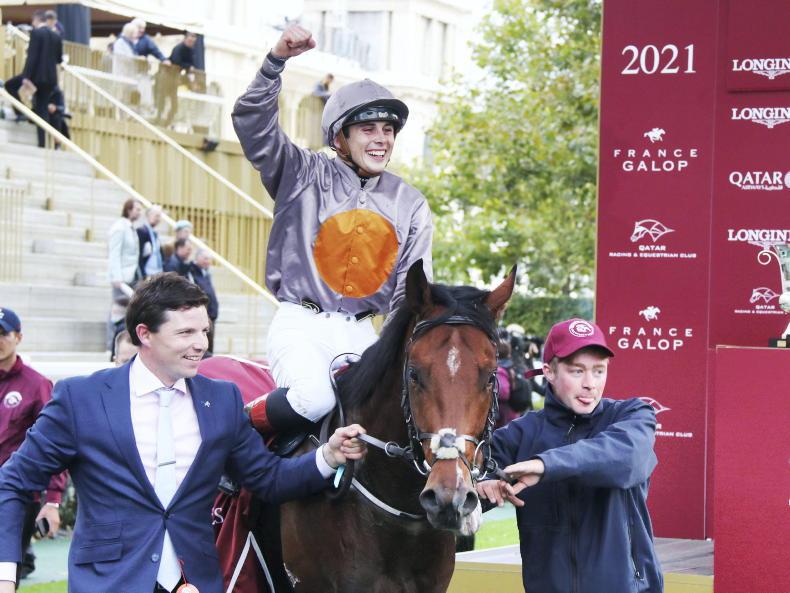THE flat season is less than a week old but from an international perspective we have already witnessed one of the great highlights of 2022 which came courtesy of the Adrian McGuinness-trained A Case Of You in last Saturday’s Al Quoz Sprint in Meydan.
This famous success, which was achieved under Ronan Whelan, marked the latest compelling chapter in a spectacular tale which featured another Group 1 triumph in Paris last autumn when the A Case Of You landed the Prix de l’Abbaye.
Truly this is a rags to riches tale as A Case Of You was friendless as a yearling before a Dundalk barrier trial victory marked the beginning of his steady ascent to the top of the sprinting division.
Meanwhile, this success provided further evidence of the emergence of the McGuinness yard as a notable force in Irish flat racing.
After enjoying a spectacular season in 2006 when his eight-horse string amassed 21 victories, McGuinness had to endure some lean times in the first half of the last decade but in recent seasons the yard’s results have all been pointing in one direction and that upward trajectory is likely to yield many more days to savour over the coming years.
Japan’s raiding part
Another striking aspect of events in Dubai was the latest tour de force from a Japanese raiding party which yielded five winners on the World Cup undercard.
This follows on from four successes at the international fixture in Saudi Arabia in February to go with two at the Breeders Cup last November.
However, Japan’s status as a racing superpower was established well before these recent events. Indeed it was all the way back in 1998 that Japanese racing served notice of its excellence when Seeking The Pearl won the Group 1 Prix Maurice de Gheest at Deauville before her compatriot Taiki Shuttle landed the Prix Jacques le Marois the following week.
Since then Japanese horses have frequented Europe on a more regular basis with a particular emphasis on the Arc de Triomphe.
That prize has thus far eluded runners from the Far East but it is inevitable they will triumph and the likelihood of a Japanese one-two-three in the great race is something that will probably come to pass at some point in the future.
One only has to look at how international success in the Japan Cup has tapered off dramatically this century - just two overseas winner since 2000 and none since 2005 – to get a gauge of their middle-distance strength.
Beginning
The question could be asked as to why Seeking The Pearl and Taiki Shuttle did not mark the beginning of a Japanese onslaught on Europe’s Group 1 prizes but the fact is that if prize money in Europe were any way comparable to Japan we would probably have seen a lot more runners from that country.
By way of example, the Dubai Sheema Classic winner Shahryar netted in excess of €300,000 for a Group 3 success in March 2021. Why would one travel when such riches are on offer domestically?
That is an argument for another day but one which should start to concentrate the minds of all racing jurisdictions in this part of the world.
Another fascinating aspect of the Japanese success in Dubai is the background of the various winners and their sires. Of the five winners in Meydan three were by stallions who had shown top class form at a mile-and-a-half.
Two miles
Those three sires also competed at trips up to two miles with Stay Foolish’s sire Stay Gold being placed over that distance while the great and much missed Deep Impact (the sire of Shahryar) showed some of his best form at two miles.
It should be noted that these horses hail from a jurisdiction which places great stock in middle-distance racing but it is still fascinating to consider the background of these sires, the chances they have been given at stud and the results that they have achieved with Deep Impact a notable achiever with his representatives in these parts.
All this leads one to ask what sort of stud career would have awaited those horses in Europe if they showed top class form at a mile and a half and beyond.
Again, it has to be noted that the structure of things in Europe is quite different with such an emphasis being placed on speed and precocity.
This is not to suggest that the European approach is wrong but rather we would do well to consider what works in other parts of the world. Maybe if a horse does show top class form beyond a mile and a half they shouldn’t be immediately consigned to the realm of National Hunt, but it will take a sea change in attitude to alter the commercial realities which make such outcomes a foregone conclusion.


 This is a subscriber-only article
This is a subscriber-only article
 It looks like you're browsing in private mode
It looks like you're browsing in private mode











SHARING OPTIONS: